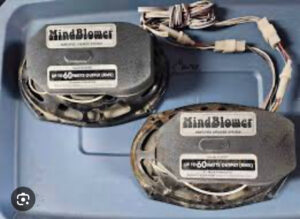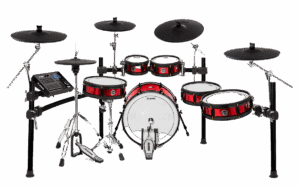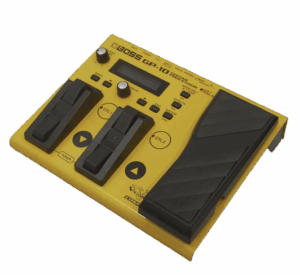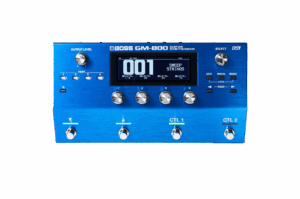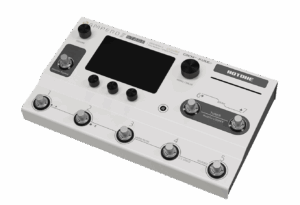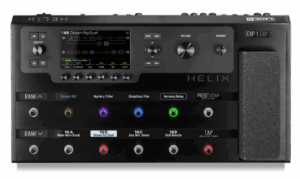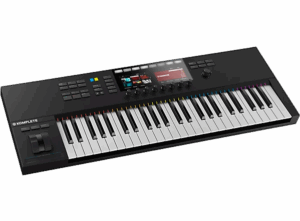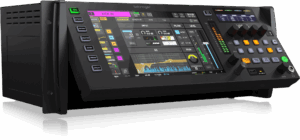
The Korg Kronos, first introduced in 2011 and updated through various iterations like the Kronos X and Kronos 2, remains a flagship music workstation in 2025, with the recent Kronos 3 announced at NAMM 2025. Renowned for its nine distinct sound engines, extensive sound library, and robust performance features, it’s a favorite among professionals like Jordan Rudess and Derek Sherinian. Despite its age, the Kronos continues to compete with newer workstations, though some aspects show its age. Here’s a detailed review based on its features, performance, and user feedback from various sources.
Korg Kronos Review: A Timeless Workstation Powerhouse in 2025
- Build and Design
- Available in 61-key (semi-weighted), 73-key, and 88-key (RH3 weighted) models; the 88-key LS version offers a lighter keybed for organ/synth players.
- Sleek aluminum body with wooden end cheeks, though glossy plastic ends on older models may scratch easily; newer models feature a vented back panel.
- 8-inch TouchView color touchscreen is responsive but can feel sluggish; some users suggest a larger external monitor for easier navigation.
- Boot time is slow at 2 minutes 15 seconds, a potential issue for live settings; the Kronos 3 introduces a fanless motherboard to reduce noise and improve boot time.
- Weighs 46.5 lbs (73-key) to 53.1 lbs (88-key), making it heavy for frequent transport.
- Sound Quality and Engines
- Nine synthesis engines (SGX-2 for pianos, EP-1 for electric pianos, CX-3 for organs, AL-1 for analog modeling, MOD-7 for FM synthesis, and more) deliver exceptional versatility.
- SGX-2 piano engine offers realistic grand piano sounds (e.g., Berlin D with sympathetic resonance), often outshining acoustic pianos, though some users prefer Nord’s piano samples.
- CX-3 organ emulation excels with deep editing for authentic Hammond tones; synth engines like MS-20EX and PolysixEX provide rich analog modeling.
- Over 21GB of preset waveform data and 300+ Kronos Sound Libraries, including iconic sounds like KRS-08 Best of Triton and KRS-06 CX-3 Signature Sounds.
- Drawback: Some factory strings and guitars sound less realistic compared to high-end VSTs; third-party EXs libraries help but require additional investment.
- Performance and Features
- 16 MIDI tracks and 16 audio tracks sequencer with real-time/step recording, though it lacks a piano roll editor, making detailed edits cumbersome.
- Set List mode is a standout for live performance, allowing quick sound selection with smooth transitions, enhanced in later OS updates for better customization.
- KARMA arpeggiation offers creative sequencing, though some users find it complex and underutilized; absent in the Nautilus, a related model.
- 62GB SSD provides ample storage for samples and libraries, but the 48kHz sample rate requires conversion for CD burning, a minor inconvenience.
- 12 insert effects, 2 master effects, and 2 total effects with 197 types allow extensive sound shaping, though some find the effects interface cluttered.
- Workflow and Usability
- Touchscreen and control surface (sliders, joysticks, ribbon) enable intuitive real-time control, but the UI feels dated with a cramped layout for deep programming.
- Users report a steep learning curve; editing sounds across nine engines can be tedious due to inconsistent interfaces and poor documentation organization.
- OS updates (e.g., v3.2) have added features like enhanced Set Lists and new sound packs (Berlin Piano, Famous Songs presets), keeping it relevant.
- Korg’s support includes video tutorials, a plus for beginners, though some suggest using a larger touchscreen monitor for easier navigation.
- Drawback: No aftertouch on the LS-88 model, and the RH3 keybed on 73/88-key versions can feel heavy for fast synth lines.
- Value and Reliability
- Priced between $2,999 (61-key) and $3,799 (88-key) for older models, with Kronos 3 pricing TBD; a good value compared to the OASYS but expensive for casual users.
- Users praise its longevity, with many units still in use after a decade, though some report issues like slow boot times and fan noise in older models.
- Korg’s long-term support ensures compatibility across generations, with sound libraries usable on all Kronos models, preserving investment value.
- Some concerns about future relevance as Korg pushes the Nautilus, which lacks KARMA and aftertouch but offers a more affordable alternative.
- Mixed feedback: While many call it the “best workstation ever,” others find it overkill for those not needing its full feature set, especially with modern DAWs and VSTs.
Summary
The Korg Kronos remains a benchmark workstation in 2025, offering unmatched versatility with its nine sound engines, vast library, and live performance features like Set List mode. Its sound quality, particularly for pianos and organs, is exceptional, though some sampled instruments lag behind VSTs. The Kronos 3 addresses some hardware limitations, but the dated UI, slow boot, and steep learning curve may deter new users. For professionals needing an all-in-one solution, it’s a worthy investment, but those focused on DAW-based production might find its complexity unnecessary. The Kronos continues to shine as a “desert island” keyboard for its depth and reliability.
